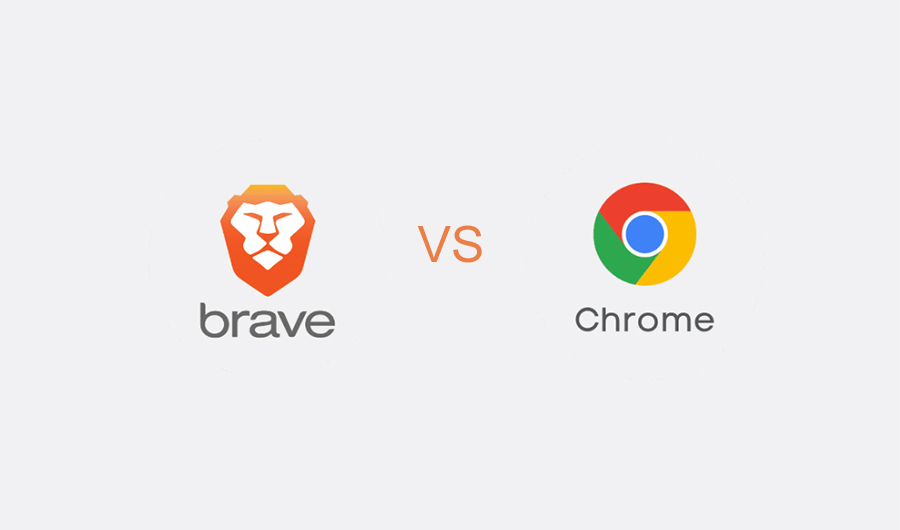
A Deep Dive into Browser Security: Brave vs Chrome
In the digital era, securing your online activity has never been more critical. Two browsers standout in the security arena: Brave, renowned for its privacy-focused architecture, and Chrome, Google’s powerhouse known for its speed and efficiency. Comparing both can help you make an informed decision about which shield best guards your virtual life.
Brave prides itself on its array of built-in security features designed from the ground up to protect your privacy. This isn’t science fiction; it’s the security-first approach Brave takes to ensure that you remain a ghost in the machine, elusive to trackers aiming to monetize your clicks. On the flip side, Chrome is often the go-to browser for many, offering seamless integration with Google services and an extensive library of extensions.
Encrypting Data
When browsing the web, your personal data’s security hinges on robust encryption protocols. Here’s how Brave and Chrome ensure your information stays protected.
HTTPS and SSL Certificates
Brave:
- Actively enforces HTTPS connections wherever possible, even upgrading requests from HTTP to HTTPS.
- Provides a shield icon to signify secure connections, giving you peace of mind with a visual cue.
Chrome:
- Supports HTTPS and alerts you when a website’s security certificate is outdated or dubious.
- Includes an “Enhanced protection” mode in settings that improves security against phishing and malware.
End-to-End Encryption
Brave:
- Implements end-to-end encryption in Brave Talk, its video conferencing feature, ensuring conversations remain private.
- Does not have an end-to-end encryption feature for browser sync, but your data is encrypted locally and transmitted over a secure connection.
Chrome:
- Uses end-to-end encryption for synced data across devices in Chrome, meaning only you can access your information.
- Extends this encryption to Google services integrated into the browser, like Gmail and Google Drive.
Remember, while both browsers offer strong data encryption, it’s essential to stay mindful of the additional security features and settings available to you.
Privacy Features
In the cyber age, your privacy is paramount. Let’s explore how Brave and Chrome handle privacy, focused specifically on what matters to you: tracking prevention, ad-blocking, cookie management, and private browsing.
Tracking Prevention
- Brave boasts Shields, a built-in feature that automatically blocks trackers and third-party fingerprinting. You don’t need to tweak settings; it works out of the box to keep you cloak-and-dagger online.
- Chrome, however, relies more on user settings and extensions for tracking prevention. You can adjust privacy controls or add extensions like Privacy Badger, but the onus rests on you.
Ad-Blockers
- Brave takes a stand against ads with its integrated ad-blocker, stopping them before they load. Its approach ensures a cleaner, faster, and more enjoyable browsing experience.
- Chrome permits ads by default. But don’t fret! You can still banish ads by downloading extensions such as uBlock Origin. Keep in mind this is an extra step for a clutter-free web voyage.
Cookie Management
- Brave offers nuanced control over cookies. You’ll find options to block all cookies or just those from third parties, safeguarding your personal data while browsing.
- Chrome also hands you the reins with cookie settings. However, you must navigate through settings to deny or permit cookies from specific sites, demanding a bit more interaction on your part.
Private Browsing Modes
- Brave has a “Private Window with Tor” option, elevating privacy beyond standard incognito modes. Not only are your browsing activities not recorded, but your internet traffic is also rerouted for added anonymity.
- Chrome provides “Incognito Mode” where your activities aren’t saved on your device, but your ISP or employer might still peek. Remember, it’s private but not invisible.
Remember, your choice between Brave and Chrome can shape your online privacy landscape, so choose wisely for a safer browsing life on the web!
Security Comparisons
When evaluating browser security, it’s essential to focus on how Brave and Chrome handle critical aspects like password management and protection against online threats. Each browser has different strengths and strategies to keep you safe. Let’s delve into the comparison of Chrome vs Brave browser and see how they address key security concerns.
Password Management
Brave and Google Chrome both offer built-in password managers to store and autofill your credentials securely. While Chrome relies on Google’s infrastructure to synchronize your passwords across devices, Brave offers a built-in password manager with an option for local storage, minimizing exposure to potential cloud vulnerabilities. The browsers warn you of compromised passwords and encourage regular updates for optimal security.
Phishing Protection
Phishing protection in Chrome is significantly boosted by Google’s Safe Browsing technology, which proactively warns you about malicious sites and downloads. Brave also provides robust phishing protection by checking visited pages against a constantly updated list of threats. Blocking scripts and cross-site trackers, which Chrome may allow through its settings, adds an additional layer of protection in Brave.
Malware Defense
Brave offers strong defense against malware due to its aggressive shielding against ads and third-party trackers, which naturally limits malicious software vectors. Chrome offers similar protections but tends to allow more site content by default, which could potentially increase exposure to malware. Both browsers update frequently to defend against the latest known threats.
Extension Security
Extensions can be a mixed bag when it comes to security. Chrome’s Web Store has a vast selection, but that variety comes with a risk of malicious extensions. Each extension is subjected to security checks, but imperfect systems can let harmful apps slip through. Brave’s approach to extensions is more conservative, focusing on privacy-oriented add-ons and maintaining a smaller but more tightly regulated library.
By understanding the way each browser approaches these four critical areas, you can make a more informed choice that aligns with your security preferences and needs. The ongoing battle for the safest browsing experience, Brave vs Google Chrome, depends on continuous updates and a commitment to user protection.
User Experience and Performance
When you launch Brave or Chrome, you’re greeted with a sleek interface, but they have some distinct differences worth noting. Brave strives for a clutter-free environment, which might be refreshing if you prefer minimalism. The browser blocks ads and trackers by default, which can significantly enhance your browsing speed. In contrast, Chrome offers a familiar environment with easy access to Google services, which can be a huge plus if you’re deeply integrated into the Google ecosystem.
| Feature | Brave | Chrome |
| Ad Blocking | Built-in | Requires extension |
| Loading Speed | Often faster (no ads) | Can vary (with ads) |
| Customization | Less extensive | More options and extensions |
| Sync | Basic sync options | Advanced with Google account |
| Privacy | Higher default privacy | Less private by default |
Performance-wise, Brave is known for being quick on its feet, with page loads often feeling snappier, thanks to the lack of ads loading in the background. On the other hand, Chrome’s performance is dependable, and if you’re someone who loves having numerous tabs open without a hitch, Chrome’s stability is top-notch.
Regarding extensions, Chrome takes the cake. With its extensive library, you can tailor-make your browser to fit exactly what you need. Brave, though catching up, has a leaner selection. Yet, it’s vital to note that every additional extension in Chrome can impact your browsing speed and privacy, something Brave users worry less about.
Conclusion
To sum it up, your choice hinges on what you value more—Brave’s streamlined, performance-focused experience or Chrome’s versatile, feature-rich environment. Each has its merits, tailored to fit different preferences and needs. Whether prioritizing privacy or performance, understanding how each browser aligns with your needs is key to navigating the digital landscape.





